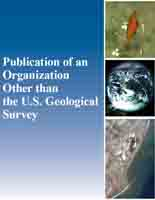Aftershocks halted by static stress shadows
Links
- More information: Publisher Index Page (via DOI)
- Download citation as: RIS | Dublin Core
Abstract
Earthquakes impart static and dynamic stress changes to the surrounding crust. Sudden fault slip causes small but permanent—static—stress changes, and passing seismic waves cause large, but brief and oscillatory—dynamic—stress changes. Because both static and dynamic stresses can trigger earthquakes within several rupture dimensions of a mainshock, it has proven difficult to disentangle their contributions to the triggering process1–3. However, only dynamic stress can trigger earthquakes far from the source4,5, and only static stress can create stress shadows, where the stress and thus the seismicity rate in the shadow area drops following an earthquake6–9 . Here we calculate the stress imparted by the magnitude 6.1 Joshua Tree and nearby magnitude 7.3 Landers earthquakes that occurred in California in April and June 1992, respectively, and measure seismicity through time. We show that, where the aftershock zone of the first earthquake was subjected to a static stress increase from the second, the seismicity rate jumped. In contrast, where the aftershock zone of the first earthquake fell under the stress shadow of the second and static stress dropped, seismicity shut down. The arrest of seismicity implies that static stress is a requisite element of spatial clustering of large earthquakes and should be a constituent of hazard assessment.
Study Area
| Publication type | Article |
|---|---|
| Publication Subtype | Journal Article |
| Title | Aftershocks halted by static stress shadows |
| Series title | Nature Geoscience |
| DOI | 10.1038/NGEO1465 |
| Volume | 5 |
| Publication Date | May 06, 2012 |
| Year Published | 2012 |
| Language | English |
| Publisher | Macmillan Publishers |
| Contributing office(s) | Earthquake Science Center |
| Description | 4 p. |
| First page | 410 |
| Last page | 413 |
| Country | United States |
| State | California |
| Other Geospatial | San Andreas Fault |


